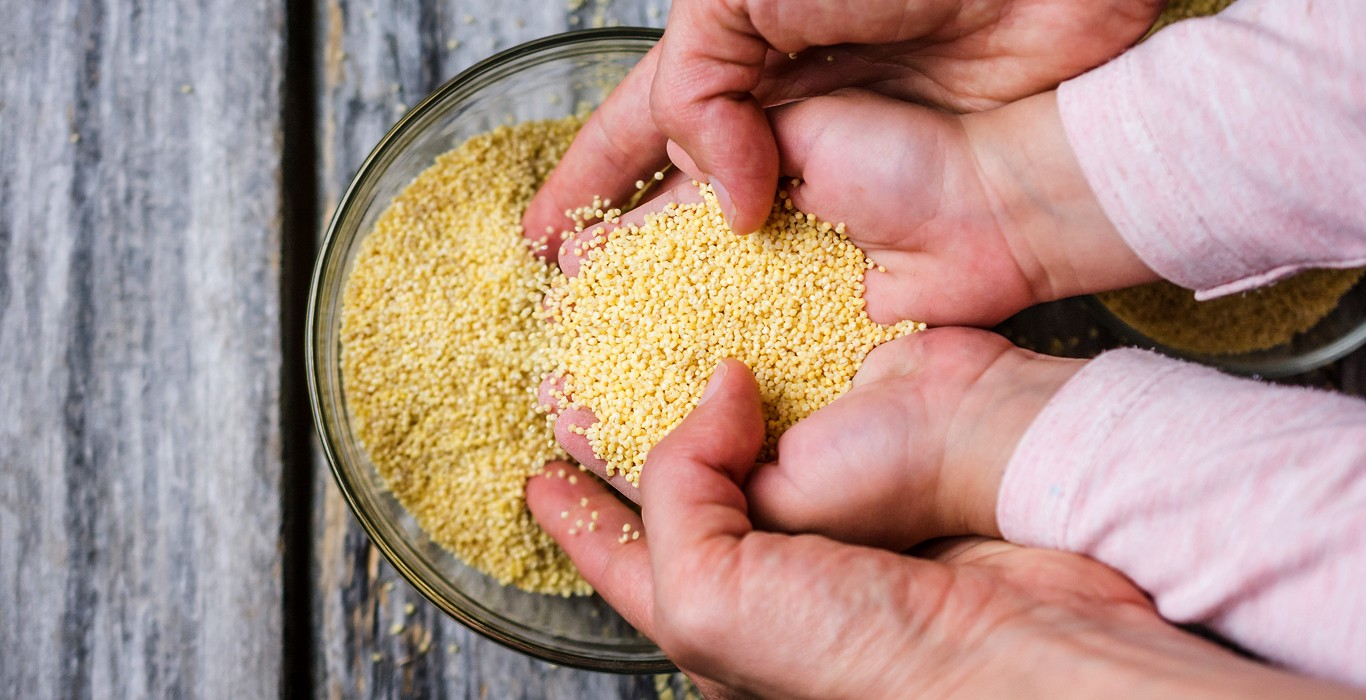In recent years, millets have made a powerful comeback. Since the declaration of “2023 as an “International Year of Millets”, people across the globe are making conscious efforts to include millets in their diets.
Millets are small-sized, round-shaped grains belonging to the Paniceae family. They are ancient grains and we can find evidence of millet consumption in the prehistoric era too. Millets come in various varieties such as little millet, Kodo millet, Finger millet and foxtail millet etc. India itself has around seven popular millet varieties.
Millets are environment-friendly grains and require less water and pesticides to grow and survive. Increasing millet production and consumption can be a great way to promote sustainable agriculture and reduce the carbon footprint on the environment. This is one of the reasons for millets to be considered as the new-age global grain.
Read on to know more about the environmental benefits of millets and its role in providing food and nutritional security in India.
What are the environmental benefits of millets?
Millets are drought-resistant crops and they can grow in adverse climatic conditions
Millets can grow in less fertile soil. They are drought-resistant crops and can survive well in hot temperatures too. This climatic resistance makes millet a preferred choice of crop for arid and semi-arid regions of India where growing other popular crops like wheat, rice etc., is challenging.
Millets require less water to grow
Water scarcity is one of the major challenges in many parts of the country. As per global trends 2040, developed countries are most vulnerable to water security risk in the upcoming 20 years. Here, again millets come across as a great option to solve the problem. Millets require 70-80% less water than other popular crops like wheat and rice. Thus, millets crops can be a great option to grow with less water supply.
Millets offer natural resistance to pests (less requirement of fertilizers)
Extensive use of fertilizers is extremely harmful to our health and environment. Research shows increased pesticide exposure has a close association with major health problems such as leukemia and non-Hodgkin Lymphoma. Millets work great in this aspect too. Millets offer natural resistance to pests and insecticides. They require less pesticides to grow and can be a great option to promote organic agriculture.
Millets are great for soil health too
Poor soil health is one of the major environmental issues. Millets can help a lot to resolve this issue. Millets help in preventing soil depletion and improve its fertility and overall soil health.
The positive impact of environmental benefits of millets
Millets’ environmental benefits create lots of positive impacts ranging from helping in solving the food security issue to being a prime factor in achieving the SDG goals.
Here are more details:
Providing food and nutritional security
India is one of the most densely populated countries in the world. It is challenging to feed the constantly growing population. To solve this issue, increased production and consumption of millets can offer great help. As per recent scientific research, pearl millet is one of the underutilized crops. It has amazing climate-resistant properties and it can play a vital role in ensuring food security and combating malnutrition.
Help in achieving SDG goals
Millet’s nutritional and environmental benefits can help a lot in achieving SDG goals. As per United Nations, millets can be a major contributing factor in achieving SDG goals, mainly SDG 2 (Zero hunger), SDG 3 (Good health and well-being), SDG-12 (Sustainable consumption and production) and SDG-12 (Climate action).
Great for farmers
Because millets can grow in less fertile soil and require less maintenance to grow, they can be beneficial for farmers. They can be great in reducing the economic burden on farmers and providing economic security to them.
Millet’s health benefits too are widely known. Millets are a great grain for diabetes. They are high in fiber and help in the weight loss process. Millets are the powerhouse of nutrition, they contain various essential nutrients such as iron, manganese, calcium etc. and work great in preventing and treating various nutritional deficiencies. Moreover, being gluten-free, they are great for those who have gluten sensitivity.
Conclusion
In conclusion, millets are a wholesome package in terms of nutritional and environmental benefits. Though the United Nations and the Indian government are taking various measures to raise millet awareness, millets still have a long way to go on a global level. If more and more people come forward and help in spreading the millet benefits, then it could be a win-win situation for our farmers and the environment both.







